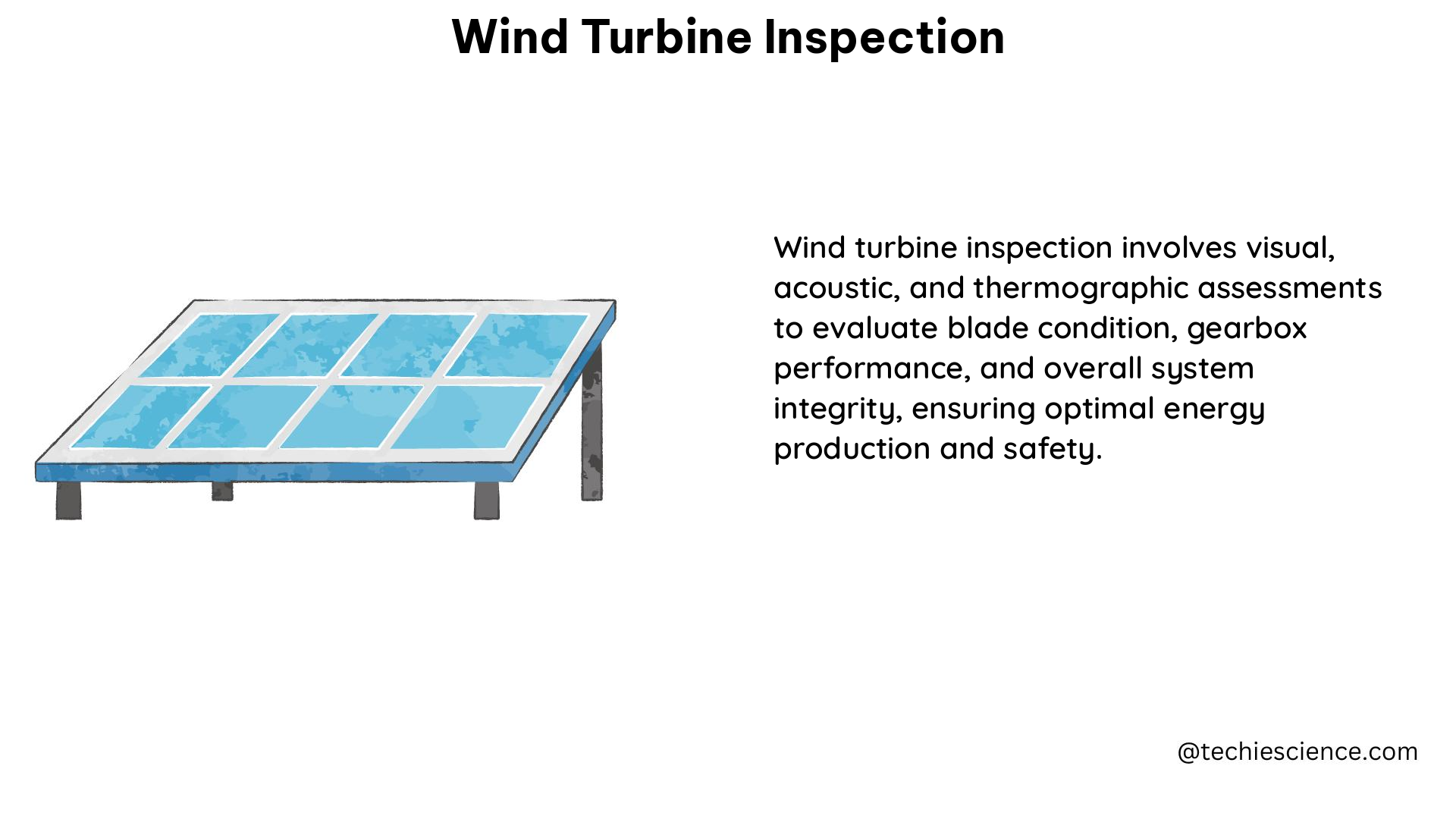Wind turbine inspections are crucial for maintaining energy efficiency and prolonging the lifespan of turbine components. This comprehensive guide delves into the measurable and quantifiable data points that highlight the importance and methods of wind turbine inspections, providing a valuable resource for wind energy professionals and enthusiasts alike.
Frequency of Inspections: Proactive Maintenance
Regular surface inspections of wind turbines should be performed at least once a year to identify any issues early on. This allows for timely repairs that can prolong a component’s life without reducing energy production. Depending on the turbine’s location, age, and operating conditions, the frequency of inspections may need to be increased to ensure optimal performance.
Blade Length: Addressing Corrosion Challenges

Wind turbine blades can exceed 200 feet in length, and internal corrosion from salty air is a significant concern, especially in offshore wind farms. Comprehensive inspections are necessary to detect and address these issues before they compromise the structural integrity of the blades.
Inspection Depth: Uncovering Hidden Flaws
Wind turbine inspections can be divided into three categories: surface inspection, sub-surface inspection, and internal inspection. Sub-surface inspections utilize advanced technologies such as thermal imaging, shearography, ultrasound, electromagnetic, and radiography to identify structural flaws without deconstructing the components.
| Inspection Type | Depth | Techniques |
|---|---|---|
| Surface Inspection | Visible surface | Visual, Dye Penetrant, Magnetic Particle |
| Sub-Surface Inspection | Below the surface | Thermal Imaging, Shearography, Ultrasound, Electromagnetic, Radiography |
| Internal Inspection | Inside the blade | Borescope, Endoscope |
Defect Detection: Identifying and Addressing Issues
Surface inspections can detect a variety of defects, including:
– Surface cracks
– Leading-edge erosion
– Lightning strikes
– Bird strikes
– Delamination
– Leading or trailing edge splits
Identifying these issues early on is crucial for maintaining the structural integrity and performance of the wind turbine.
Non-Destructive Testing: Preserving Component Integrity
Sub-surface inspections are non-destructive, utilizing contact-less technologies that can see through thick composite coatings without deconstructing the components. This approach allows for comprehensive inspections without compromising the turbine’s structural integrity.
Internal Inspection Limitations: Addressing the Unseen
Technicians are legally only allowed to go 91 feet (28 meters) inside the blade, leaving over half of the internal structure uninspected in many cases. This limitation highlights the need for innovative inspection techniques and technologies to ensure the complete assessment of the turbine’s internal components.
Wind Farm Size: Scaling Inspection Challenges
Some wind farms have several hundred wind turbines that need inspecting annually, making traditional inspection methods unsustainable. Adopting advanced technologies, such as drones and automated inspection systems, can significantly improve the speed, safety, and cost-effectiveness of the inspection process.
Cost and Efficiency: Optimizing Inspection Processes
Adopting drone technology in wind turbine inspections can improve the speed, safety, and cost-effectiveness of the process. Drones can access hard-to-reach areas, capture high-quality images and videos, and provide real-time data analysis, reducing the need for manual inspections and minimizing the risk to technicians.
Wind Turbine Technician Job Growth: Expanding Opportunities
The job growth of wind turbine technicians is expected to grow 60% within the next decade, reflecting the increasing importance of wind energy and the need for regular inspections. This growth presents exciting career opportunities for individuals interested in the wind energy industry.
Wind Data and Tools: Leveraging Valuable Resources
The National Renewable Energy Laboratory (NREL) provides open-source data sets and predictive modeling tools for the analysis of wind energy, including the Annual Technology Baseline, Cambium data sets, and wind data from 135-meter turbine inflow research towers. These resources can be invaluable for wind turbine inspections and maintenance planning.
Hyperspectral Imaging: Enhancing Fault Identification
Hyperspectral imaging can capture comprehensive spectral information from blade surfaces, facilitating exact fault identification. This technology can provide a more detailed and accurate assessment of the turbine’s condition, enabling targeted repairs and maintenance.
UAV Deployed Photogrammetry: Precise Defect Mapping
UAV-deployed photogrammetry can provide sub-millimeter agreement under optimized lighting conditions and excellent matching of defects when operating off a commercial wind turbine blade complete with damage accumulated during industrial use. This approach can significantly improve the accuracy and efficiency of wind turbine inspections.
By incorporating these advanced techniques and technologies, wind energy professionals can ensure the optimal performance and longevity of their wind turbines, contributing to the overall sustainability and growth of the renewable energy sector.
References:
– Wind Turbine Inspection: Ensuring Efficiency and Longevity
– NREL Wind Data and Tools
– Hyperspectral Imaging for Wind Turbine Blade Inspection
– UAV-Deployed Photogrammetry for Wind Turbine Blade Inspection

The lambdageeks.com Core SME Team is a group of experienced subject matter experts from diverse scientific and technical fields including Physics, Chemistry, Technology,Electronics & Electrical Engineering, Automotive, Mechanical Engineering. Our team collaborates to create high-quality, well-researched articles on a wide range of science and technology topics for the lambdageeks.com website.
All Our Senior SME are having more than 7 Years of experience in the respective fields . They are either Working Industry Professionals or assocaited With different Universities. Refer Our Authors Page to get to know About our Core SMEs.